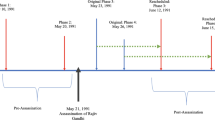Conclusion
What do the preceding results tell us for democratic theory? First, that a majority can always defend itself against 2-issue special interest vote trades with a coalition no larger than that used by the minority. In terms of numbers counter-trades are no harder to organize than 2-issue special interest vote trades.
Since we might expect that 2-issue vote trades are easier to organize than trades involving 3 or more issues, this result is encouraging. The author is currently conducting research on the incidence of various types of strategic voting in the U.S. Congress. This research indicates that voter agreements, when they can be identified, are usually quite simple. Thus 2-issue trades may be found to comprise the bulk of the vote trading that takes place in the Congress. If so, then in those cases the majority needs a coalition no larger than that used by the minority to block vote trades that are harmful to its interests.
However, for special interest trades involving 3 or more issues, Figure 3 demonstrates that the size advantage may rest with the minority. If size is a major consideration in organizing vote trading coalitions, we should expect then that more of these trades will be successful than 2-issue special interest trades. Given the complexity of trades involving 3 or more issues, it seems reasonable to expect that in Congress such trades would usually be transacted at the staff or committee level. Special interest vote trading carried out at this level would then appear to be the most difficult kind to block. Thus trade size is both important for the theory of vote trading and may also be an important determinant of how vote trading is practiced.
Similar content being viewed by others
References
Ferejohn, John. (1975). ‘Sophisticated Voting With Separable Preferences.’ Social Science Working Paper Number 77, California Institute of Technology, March 1975.
Schwartz, Thomas. (1977). ‘Collective Choice, Separation of Issues and Vote Trading.’ American Political Science Review, 71 (September): 999–1010.
Author information
Authors and Affiliations
Additional information
I wish to thank an anonymous referee for some very helpful comments.
Rights and permissions
About this article
Cite this article
Enelow, J.M. On the size of vote trades. Public Choice 35, 197–203 (1980). https://doi.org/10.1007/BF00140843
Issue Date:
DOI: https://doi.org/10.1007/BF00140843




